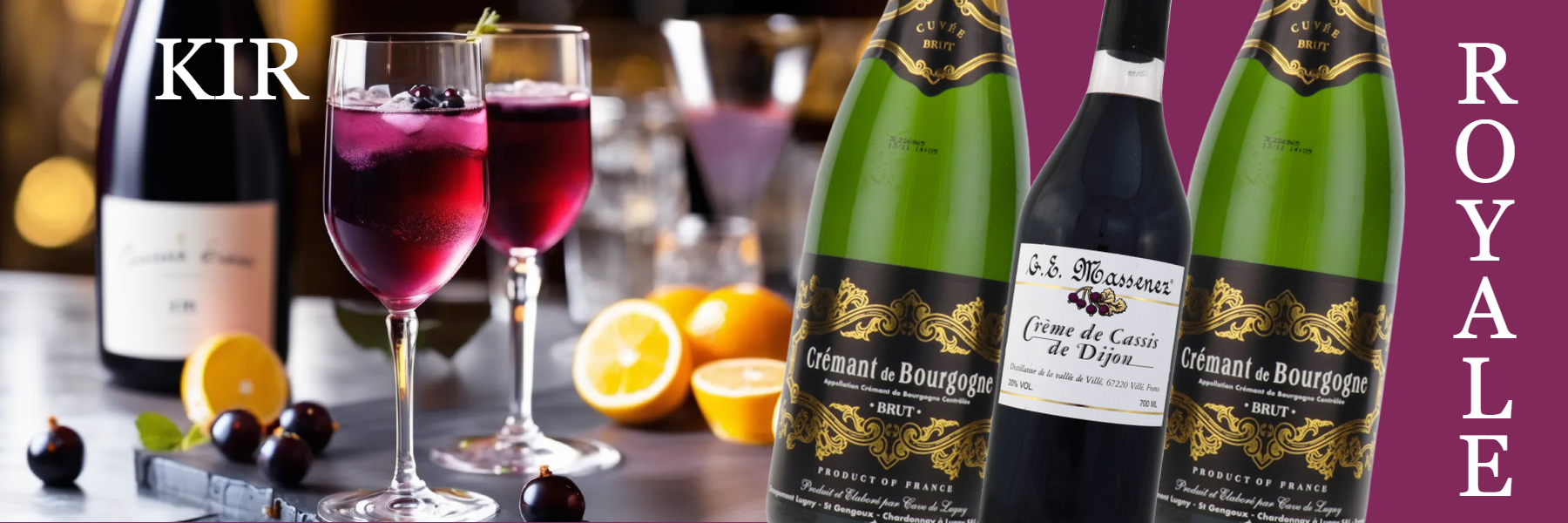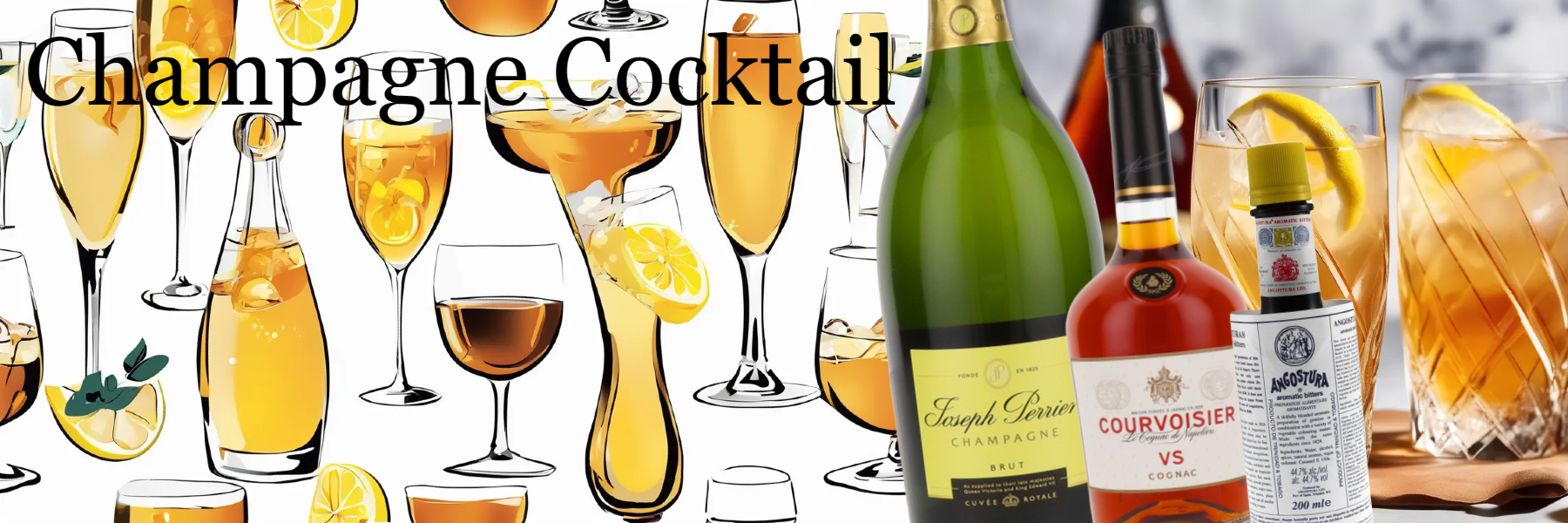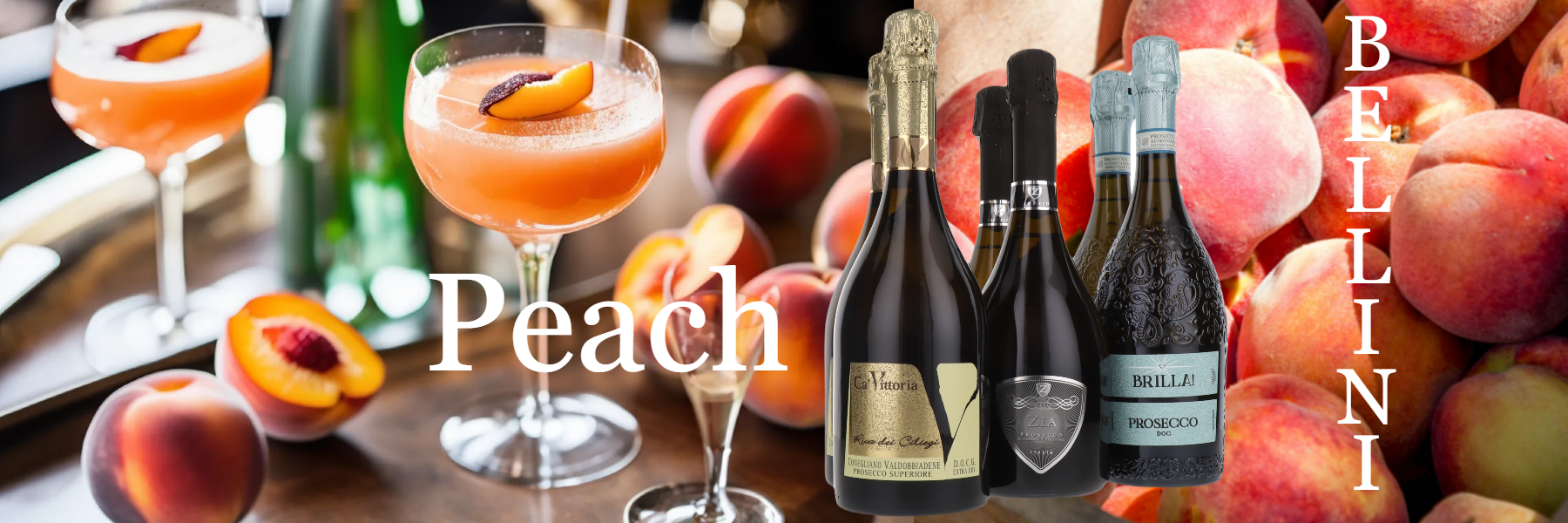Summer holidays are here and we're all off chasing the sun, looking for that oasis hideaway where we can relax with a chilled bottle of wine. If the shine's gone out of your life, how does it feel when nobody mentions the weather? All around the world there are fantastic, sparkling wine based cocktails and I'm going to recommend my top five to you. So, enough waxing lyrical... let's begin:
The Brits love their holidays on the "Costas" and in the Balearic Islands, but with tensions rising from various local groups who're vociferously opposed to any tourists, it's good to know that the fantastic wines of Spain are readily available in the UK. So, you might as well stay at home, sit in the garden under a sun shade (yes, at the time of writing this, the sun is actually shining here!), and sip your Spanish themed cocktail without any hassle.
If you happen to make it to the buzzing city of Barcelona, in the north-western corner of Spain, the abundance of sparkling wine (Cava) in local bars and restaurants will soon become apparent. It's produced just to the west, around the towns of Vilafranca del Penedes and San Sadurní de Noya, and is the perfect fizz to make our first cocktail.
With Spain being a major source of world class citrus fruit, some tangy, freshly squeezed orange juice (zumo de naranja) mixed with chilled Cava will produce a delicious Mimosa (also known as Bucks Fizz). So simple to make, with just the two ingredients mixed together. This cocktail was originally from 1920s Paris, but let's go with a Spanish version of the drink. Substitute Champagne, if you wish. The effect is the same!
Cava is often perceived as being a "cheap & cheerful" sparkling wine, but the Spanish are now releasing many serious quality, aged wines onto the market, with some even being sold outside of the existing D.O. regulations as Penedès Espumoso. From 2017, these wines can only be made from organic grapes, using either the "traditional" (bottle fermented) method, or the "ancestral" method (with 4 years' lees ageing, non-dosage and remaining undisgorged) with a further cellar ageing for a minimum of 15 months before release. Some of these wines may be branded as Clàssic Penedès. Also, in 2019, a group of nine top producers decided to leave the Cava D.O. completely and market their wines as "Corpinnat". Think of these producers as a sparkling wine association version of Tuscany's "Super Tuscan" Vini di Tavola bottles. Classics in the making!
With most Cava production being from Catalonia, it's interesting to note that other regions of Spain are also allowed to use the name "Cava" for their sparkling wines. These include Aragon, Extremadura, Navarra, Pais Vasco, Rioja and Valencia, but contribute less than 10% of the total.
Traditional Cava wines use Macabeo, Parellada and Xarel-lo grapes, but the Champagne grapes, Chardonnay and Pinot Noir, are also now used in some wines.
Another famous cocktail with a fruit base is Kir Royale.
Originating in 19th century France, the standard Kir blends local Burgundian Aligoté still, dry white wine with the blackcurrant liqueur, Creme de Cassis, but if you switch to fizz, you get the Royale version. So simple. Another variation is to use raspberry liqueur (Creme de Framboise) for a Kir Imperial.
Let's try this one using the traditionally made Cremant de Bourgogne instead of Champagne.
Start with a clean flute glass, add a small quantity of cassis liqueur and top up with your chilled Cremant de Bourgogne. Garnish with a slice of lemon. So easy, yet so enjoyable. If you loved Ribena as a child, you're going to make this cocktail your new adult favourite.
Frazier's Cremant, from the Caves de Lugny (in Macon), is a bottle fermented wine made from a blend of mostly Chardonnay & Pinot Noir with a smaller proportion of the Gamay variety. Aged on its lees for 12 months, it makes an ideal base for a Kir Royale. With wine flavours of green and red apples, adding blackcurrant to the mix is one of those taste combinations you cannot forget. For a heavenly extra, try nibbling on some mature Cheddar cheese whilst sipping your "Royale" cocktail. Mmm... cheese!
Probably one of the most well known wine based cocktails is the Champagne Cocktail itself. This one takes a little more work to make, but the effort is worth it.
First, pour a few drops of Angostura bitters onto some sugar cubes. Drop a cube into a flute and add a small quantity of Cognac on top of it. Finally, top up your glass with Champagne and garnish with a twist of lemon.
There's a major distinction between those who drink Champagne and those who don't, and it's got nothing to do with the price! Most Champagne really is DRY to taste, whereas many Prosecco wines (labelled as "Extra Dry") are actually much SWEETER on the palate. So, obviously, the style is very different and not everyone enjoys both. Also, the grapes used are very different and the production methods are not the same. The wines just don't taste alike in any way. Try them both, find the ones you enjoy, and keep on experimenting.
Champagne is 100% French, with the wines only allowed to be made in the Champagne region with specific grapes (Chardonnay, Pinot Noir & Pinot Meunier) and with the secondary fermentation carried out in bottle.
The style is replicated around the world to varying degrees of success, but none may be sold here using the name "Champagne". It must be the real thing.
Moving to north-eastern Italy, everyone knows the classic Bellini cocktail.
First created in Harry's Bar, Venice, in 1948, it's named after the 15th century painter Giovanni Bellini and is another really straightforward drink to put together. You don't need to be a trained mixologist to try this. Juggling bottles is up to you!
Start with some fresh white peach purée in the bottom of a flute and top up with chilled Prosecco, garnishing with a sliced peach for decoration. All the flavours match here so, if you love peaches, this one's for you to try this weekend.
Venice is another tourist "hot spot" trying to restrict numbers visiting their beautiful city by charging an entry fee and an overnight hotel charge. So far, I believe, it's not been very successful, so if you want the full Prosecco experience, get yourself on a plane and see it for yourself. The region's vineyards are close at hand, so well worth a day trip to the spectacular hills of the Cartizze and Valdobbiadene.
One thing's for certain, you're unlikely to see a Prosecco shortage, with over 600 million bottles produced in 2022. Eighty per cent of the wine is exported, with the USA being the biggest single market outside of Europe. Ten per cent of the total production is now sold under the new "Prosecco Rosé" category. Try some in your Bellini if you need even more pinkness in your cocktail.
Frizzante is an off-dry, semi-sparkling style of Prosecco and Col Fondo are rare wines which are left on their fermentation lees, being sold cloudy. All Prosecco was originally made in this way, but is now mainly produced in steel tanks (Charmat method) on a large scale, with the wines being filtered before bottling.
My final suggestion for popular sparkling wine based cocktails is the Aperol Spritz.
Another Italian classic from the 1950s, this is another drink based on Prosecco with added Aperol and soda water. As a point of difference, I'm going to suggest substituting some Ferrari Trento Brut instead of the usual Prosecco. A dry wine, made by the "traditional method" with Chardonnay grapes, you don't need a Ferrari to drink it... but, if someone wants to buy me one... !
A refreshing cocktail to sip on a summer's evening, this spritz uses Aperol (an Italian bitter-sweet liqueur infused with orange, gentian, chinchona, rhubarb, and an array of other herbs and spices), blended with sparkling wine, soda water and plenty of ice.
These are all really simple cocktails to make, but they might just lead you into the vast and complicated world of spirits based styles using gin, whisky, tequila etc.
There's so much to learn. I could write a book about it, but thankfully, you won't have to buy it!






